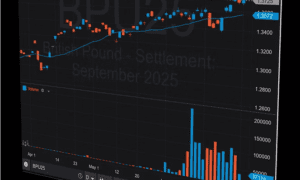In the world of digital business, visibility alone is no longer enough. Brands need a marketing approach that not only amplifies reach but also converts attention into tangible revenue. That’s where full-stack digital marketing steps in—a comprehensive strategy that encompasses every touchpoint in the customer journey, from brand discovery to final conversion. But what truly sets this approach apart is its ability to deliver results that matter: ROI.
What Is Full-Stack Digital Marketing?
Full-stack digital marketing refers to a holistic marketing approach that covers both the front-end (user-facing) and back-end (technical and data-driven) aspects of marketing. It spans across all channels—SEO, PPC, content marketing, social media, email marketing, automation, analytics, and web development. Essentially, it’s the full “stack” of tools, tactics, and strategies needed to run and scale a digital business.
Rather than siloed efforts, full-stack marketing integrates each piece into a cohesive system designed to maximize performance and ROI.
The ROI Equation: More Than Just Clicks and Impressions
Return on Investment (ROI) is the true north for any business. It’s not about how many likes a post gets or how many people visit your website. It’s about how those interactions translate into leads, sales, and long-term customer value. Full-stack marketing brings all the moving parts together to optimize the entire funnel—from awareness to advocacy—ensuring that every action contributes to measurable business growth.
1. Data-Driven Decision Making
At the heart of ROI-focused marketing lies data. Full-stack marketers leverage analytics tools to monitor performance at every stage of the funnel. They track KPIs like cost-per-click (CPC), conversion rates, customer acquisition cost (CAC), and lifetime value (LTV). These insights allow businesses to refine their strategies in real-time, reallocate budgets to top-performing channels, and eliminate waste.
The key advantage here? You’re not making guesses. You’re making informed decisions based on hard numbers.
2. SEO and Content with Purpose
SEO is not just about ranking for keywords—it’s about capturing high-intent traffic. A full-stack marketer understands how to build content that aligns with user search intent, strategically places CTAs (calls to action), and encourages conversions.
By optimizing both the technical aspects (like site speed and structured data) and on-page content (blogs, landing pages, FAQs), full-stack marketing ensures that organic traffic isn’t just flowing—it’s converting.
3. Paid Media That Pays Off
Running paid ads without a full-stack strategy is like throwing darts blindfolded. A complete digital marketing stack integrates paid campaigns with organic efforts. It creates retargeting strategies based on audience behavior, A/B tests landing pages, and uses smart bidding models to improve ROAS (Return on Ad Spend).
More importantly, it syncs ad messaging with email campaigns and website content, creating a seamless user experience that reduces friction and boosts conversion rates.
4. Marketing Automation and Lead Nurturing
ROI isn’t just about generating new leads—it’s about moving them down the funnel efficiently. With marketing automation tools like HubSpot, ActiveCampaign, or Mailchimp, full-stack marketers create personalized journeys for different segments of the audience.
This means leads aren’t just captured—they’re nurtured. From welcome sequences to re-engagement emails, automation ensures that no lead is left behind, significantly increasing the chances of conversion.
5. UX and Conversion Rate Optimization (CRO)
You can drive traffic all day, but if your website or app doesn’t convert, it’s all for nothing. Full-stack digital marketers pay close attention to user experience and CRO. This includes optimizing page layouts, streamlining checkout processes, minimizing page load times, and using tools like heatmaps and session recordings to identify pain points.
By improving the user journey, full-stack marketing turns browsers into buyers—and buyers into loyal customers.
6. Attribution and Cross-Channel Synergy
One of the biggest challenges in digital marketing is attribution—knowing which channel contributed to a sale. Full-stack marketers use tools like Google Analytics 4, UTM parameters, and CRM integrations to get a clear picture of the customer journey.
With accurate attribution, businesses can double down on what works and eliminate what doesn’t, ensuring every dollar spent is driving measurable return.
Real ROI: Why This Matters to Your Bottom Line
A full-stack digital marketing strategy is inherently ROI-focused because it’s engineered to connect the dots between marketing efforts and revenue. This means:
- Higher quality leads through precise targeting.
- Increased conversions via optimized touchpoints.
- Lower cost per acquisition thanks to data-backed strategies.
- Better customer retention through personalized communication.
- More accurate forecasting using real-time analytics.
Instead of operating reactively, businesses can scale proactively—with confidence.
The Talent Behind the Stack
Implementing a full-stack marketing approach requires a team with a diverse skillset: content creators, paid media strategists, SEO experts, email marketers, web developers, data analysts, and CRO specialists. But whether you hire in-house or work with an agency, the goal remains the same: integrate and align every aspect of your marketing with revenue-generating goals. For businesses seeking a results-oriented partner, The Real Thing Marketing Agency offers full-stack expertise that’s rooted in ROI, helping brands grow through intelligent, data-driven strategies. In some cases, a full-stack marketer may be a “unicorn” who possesses a wide range of capabilities, especially in startups or small teams. However, larger operations usually require a collaborative effort to execute this strategy effectively.
Final Thoughts
In today’s competitive digital landscape, a piecemeal approach to marketing no longer cuts it. Full-stack digital marketing is not just a buzzword—it’s a business imperative. It ensures that your marketing efforts are not only seen and heard but also felt—on your bottom line.
With every campaign connected to KPIs and every tactic optimized for conversion, full-stack digital marketing offers the clarity, control, and scalability needed to achieve and sustain long-term ROI.
So, if you’re looking to not just market—but grow—start thinking in stacks. Because in the end, it’s not about traffic. It’s about results.

































